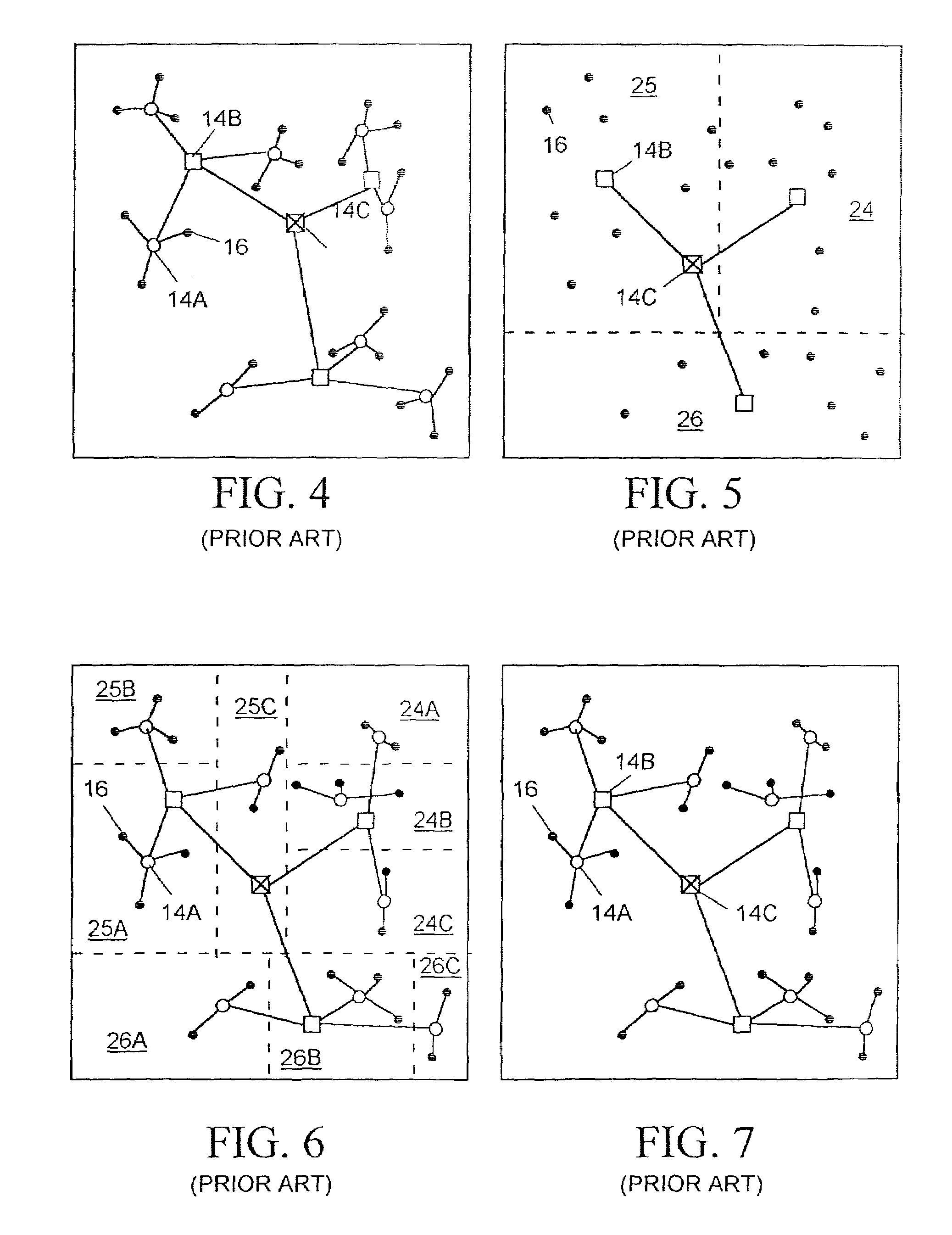Two-stage clock tree synthesis with buffer distribution balancing
a clock tree and buffer distribution technology, applied in the direction of generating/distributing signals, instruments, program control, etc., can solve the problems of more difficult for a cts tool to subsequently more difficult for a cts tool to balance the clock tree through buffer insertion, so as to achieve better uniform clock signal path distances
- Summary
- Abstract
- Description
- Claims
- Application Information
AI Technical Summary
Benefits of technology
Problems solved by technology
Method used
Image
Examples
Embodiment Construction
[0031]The present invention relates to software stored on computer-readable media which when read and executed by a conventional computer, causes the computer to act as a clock tree synthesis (CTS) tool. Suitable computer-readable media for storing the software include, but are not limited to, compact disks, floppy disks, hard disks, and random access or read only memory. While the specification describes at least one exemplary embodiment of the invention considered to be a best mode of practicing the invention, the invention is not limited to the exemplary embodiment(s) described below or to the manner in which the exemplary embodiments operate.
[0032]The clock tree synthesis tool synthesizes a clock tree for an integrated circuit (IC) for delivering a clock signal to a large number of registers, latches, flip-flops and / or other types of clocked devices (“sinks”) to be clocked by the same clock signal. The clock tree includes a hierarchy of buffers for fanning out the clock signal f...
PUM
 Login to View More
Login to View More Abstract
Description
Claims
Application Information
 Login to View More
Login to View More - R&D
- Intellectual Property
- Life Sciences
- Materials
- Tech Scout
- Unparalleled Data Quality
- Higher Quality Content
- 60% Fewer Hallucinations
Browse by: Latest US Patents, China's latest patents, Technical Efficacy Thesaurus, Application Domain, Technology Topic, Popular Technical Reports.
© 2025 PatSnap. All rights reserved.Legal|Privacy policy|Modern Slavery Act Transparency Statement|Sitemap|About US| Contact US: help@patsnap.com



